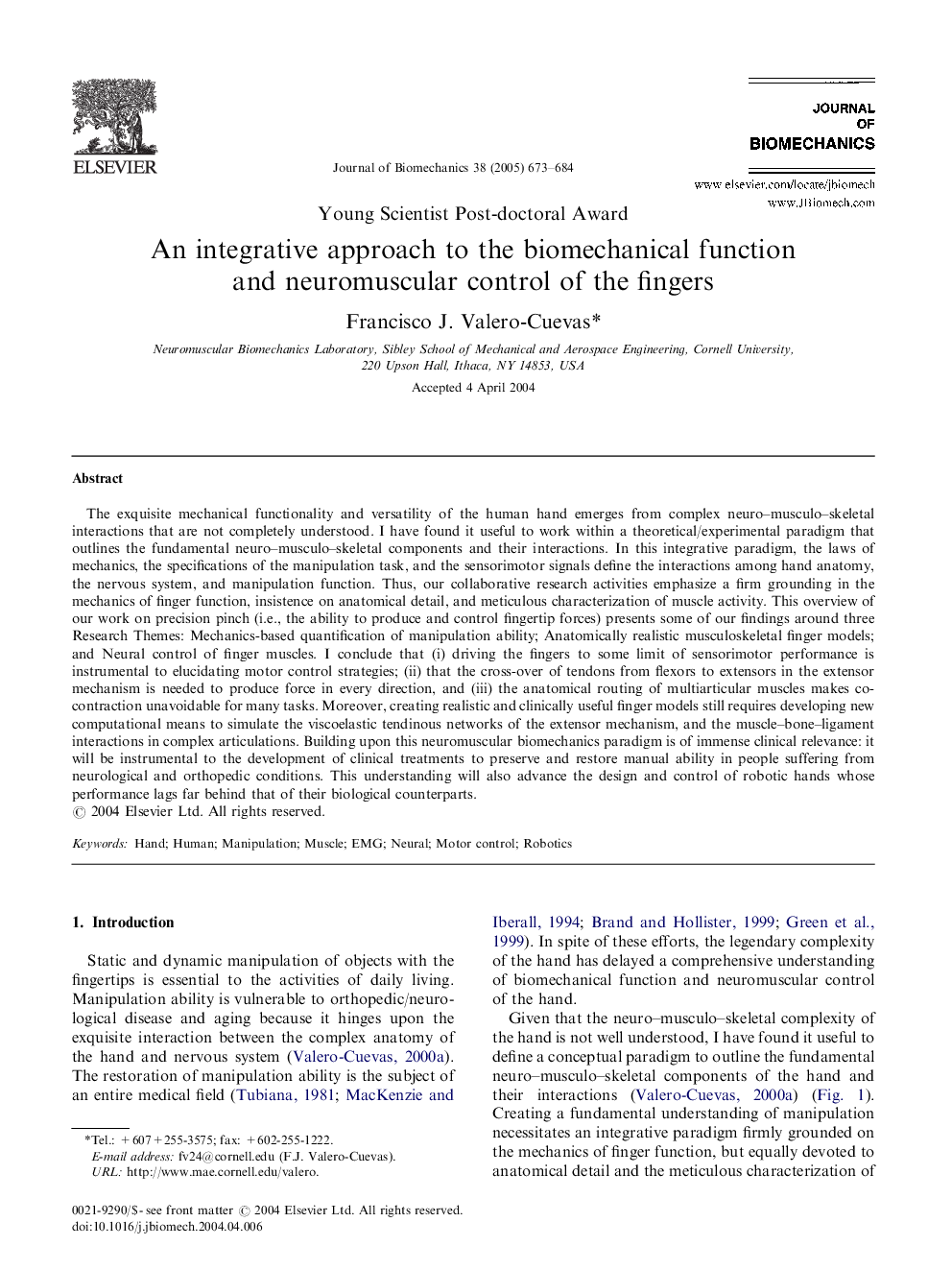| کد مقاله | کد نشریه | سال انتشار | مقاله انگلیسی | نسخه تمام متن |
|---|---|---|---|---|
| 10434422 | 910412 | 2005 | 12 صفحه PDF | دانلود رایگان |
عنوان انگلیسی مقاله ISI
An integrative approach to the biomechanical function and neuromuscular control of the fingers
دانلود مقاله + سفارش ترجمه
دانلود مقاله ISI انگلیسی
رایگان برای ایرانیان
کلمات کلیدی
موضوعات مرتبط
مهندسی و علوم پایه
سایر رشته های مهندسی
مهندسی پزشکی
پیش نمایش صفحه اول مقاله

چکیده انگلیسی
The exquisite mechanical functionality and versatility of the human hand emerges from complex neuro-musculo-skeletal interactions that are not completely understood. I have found it useful to work within a theoretical/experimental paradigm that outlines the fundamental neuro-musculo-skeletal components and their interactions. In this integrative paradigm, the laws of mechanics, the specifications of the manipulation task, and the sensorimotor signals define the interactions among hand anatomy, the nervous system, and manipulation function. Thus, our collaborative research activities emphasize a firm grounding in the mechanics of finger function, insistence on anatomical detail, and meticulous characterization of muscle activity. This overview of our work on precision pinch (i.e., the ability to produce and control fingertip forces) presents some of our findings around three Research Themes: Mechanics-based quantification of manipulation ability; Anatomically realistic musculoskeletal finger models; and Neural control of finger muscles. I conclude that (i) driving the fingers to some limit of sensorimotor performance is instrumental to elucidating motor control strategies; (ii) that the cross-over of tendons from flexors to extensors in the extensor mechanism is needed to produce force in every direction, and (iii) the anatomical routing of multiarticular muscles makes co-contraction unavoidable for many tasks. Moreover, creating realistic and clinically useful finger models still requires developing new computational means to simulate the viscoelastic tendinous networks of the extensor mechanism, and the muscle-bone-ligament interactions in complex articulations. Building upon this neuromuscular biomechanics paradigm is of immense clinical relevance: it will be instrumental to the development of clinical treatments to preserve and restore manual ability in people suffering from neurological and orthopedic conditions. This understanding will also advance the design and control of robotic hands whose performance lags far behind that of their biological counterparts.
ناشر
Database: Elsevier - ScienceDirect (ساینس دایرکت)
Journal: Journal of Biomechanics - Volume 38, Issue 4, April 2005, Pages 673-684
Journal: Journal of Biomechanics - Volume 38, Issue 4, April 2005, Pages 673-684
نویسندگان
Francisco J. Valero-Cuevas,